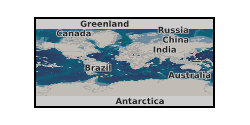Sea water
Type of resources
Topics
Keywords
Contact for the resource
Provided by
Years
Formats
Update frequencies
-

Seawater carbonate system properties and atmospheric carbon dioxide concentration reconstructions from Eocene planktonic foraminifera using boron isotope analyses.
-

Global warming during the Palaeocene-Eocene Thermal Maximum (PETM, ~56 Ma) is commonly interpreted as being driven by massive destabilization of carbon from surficial sedimentary reservoirs. If correct, this has important implications for the amplification of future fossil fuel emissions via carbon-climate feedbacks. In our study we provided new paired records of boron and carbon isotope changes in the ocean that questions this long-held interpretation. Our data are implemented in an Earth system model to reconstruct the unfolding carbon cycle dynamics across the event. Strong evidence for a larger (>10,000 PgC) and on average isotopically heavier (> -17‰) carbon source leads us to identify volcanism associated with the North Atlantic Igneous Province as the main driver of the PETM. We also find that although organic carbon feedbacks with climate played a more minor role in driving the event than previously thought, organic matter burial was important in ultimately sequestering this carbon and driving the recovery of the system. Data presented in this data set comprise geochemical elemental, as well as boron, carbon and oxygen isotopic data from surface dwelling foraminifera Morozovella Subbotina. Alongside the boron isotopic data we also provide reconstructed surface water pH with corresponding uncertainties for our preferred pH reconstruction.
 BGS Data Catalogue
BGS Data Catalogue